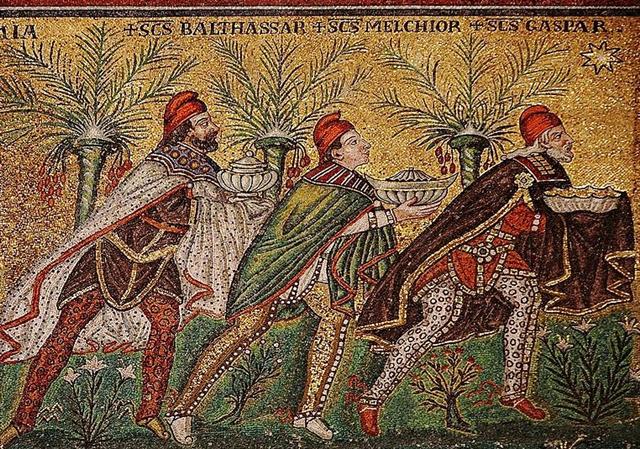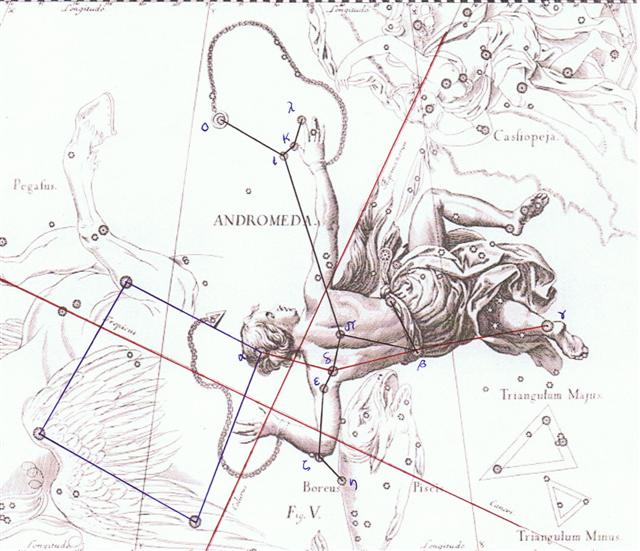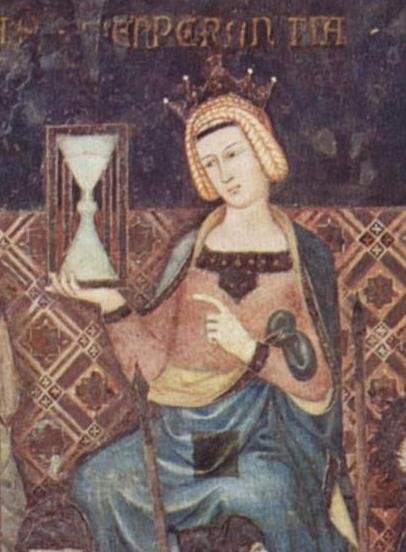Once again. The 3rd and last haka-ariki
was 12 * 29½
glyphs from the beginning of the text - or perhaps rather in day 355 (as
if
alluding to the
solstice day of December 21):
|
1 |
25 |
2-14
(45) |
FEBRUARY 15 |
326 |
 |
 |
|
Ca1-26 |
Ca2-1 (27 = 87 - 60) |
|
kua moe ki te tai. |
Te heke |
|
April 16 (471) |
17 (*27 + 80) |
|
ALRISHA
(*29)
THUBAN (*212) |
HAMAL (*30)
MENKENT (*213) |
|
26 |
October 16 |
17
(290) |
|
354
= 12 * 29½ |

|
Tahu
To assist. T Ma.: tahutahu, to
attend upon. Tahuga, pair, to share out, to
put in order, to distribute. Hakatahuga, to
put in pairs, to arrange. P (Metathetic from stem
tufa). Mgv.: tahua, a collection of
things properly classified and kept in order. Mq.:
tauna, a couple. Churchill. Pau.: tahua.
1. Field of battle. Ta.: tahua, id. 2. Floor.
Ta.: tahua, id. Tahuga, wise, capable,
doctor, artisan. Mgv.:
tuhuga, wise, instructed, adroit. Mq.:
tuhuna, wise, instructed, artisan. Sa.:
tufuga, carpenter. Ma.: tohunga, adroit,
wise, priest. Tahutahu, sorcerer. Ta.:
tahu, sorcerer. Mgv.: tahu. 1. A tenant
farmer. Ma.: tahu, opulent, possessing
property. 2. To stir up a fire. Ta.: to build a
fire, to light. Mq.: tahu, to light a fire.
Sa.: tafu, id. Ma.: to set on fire, to
kindle, to cook. Tahuna, a shallow, shoal,
bank. Mq.: tahuna, beach gravel, shingle.
Sa.: tafuna, a rocky place in the sea. Ma.: a
shoal, a beach. Tohua, a place of public
assembly. Mq.: tohua, public place, soil,
land. Mq.: tahuahi, the servant in charge of
the fire. Ha.: kahuahi, id. Churchill.
Ta.: tahuhu, ridgepole.
Ma.: tahuhu, id. Mgv.: tohuhu, a
ridgepole. Mq.: tohuhu, ridge, roofing.
Churchill. Tahua, sloping stone surface of
ahu. Vanaga. T.
Tahua, board, plank.
Tahu'a,
T. Priest, artist. OR. Tahua mimi, bladder.
Fischer. |
| Mara
To start rotting, going bad (e.g. a
lobster, a fish). See also mamara.
Vanaga. Mgv.: mara, open land,
cultivated field. Mq.: mara, maa, land
under tilth. Ta.: amara, the first stone of a
marae, etc. Sa.: mala, a new plantation. Ma.:
mara, land under tilth. Churchill.
Sa.: malae, the town green.
Nukuoro: malae, a cleared space, an open
place, a plantation. To.: malae, a gree, a
grass plot ... Ha.: malae, smooth (as a
plain) ... Ma.: marae, an inclosed place in
front of a house. Ta.: marae, the sacred
place of worship ... Vi.: mara, a burying
place ... In note 261 I have advanced the opinion
that malae is in form a conditional
derivative of lae. This holds of the
signification found in Nuclear Polynesia. The
secondary sense which the Tongafiti carried to
eastern Polynesia has obscured the lae
element; but the sacrosanct content of the marae
in the four-godded theology of eastern Polynesia is
after all but a logical outgrowth of the Nuclear
Polynesian malae as the civic center of
social life where god is sole, surpreme - and
Lucretian ... Churchill 2. |
| Kapa
Mgv.: a song for the dead, chant.
Mq.: kapa, a heathen song. Mgv.:
aka-kapakapa, an eager desire balked by
timidity. Ta.: apaapa, to flutter the wings.
To.: kabakaba, id. Ma.: kapakapa, to
flutter. Churchill.
Tu.: Kapakapa, portion,
particle. Ta.: apaapaa, fragment, bit, chip.
Churchill.
In Polynesia gliding flight is
expressed by lele, flight on flapping wing by
kapa. In Nuclear Polynesia kapa does
not pass into the wing sense except through the aid
of a composition member kau. In Samoan 'au
we find this to mean a stalk, a handle; in reference
to the body its sense as that of some projecting
member is exhibited in 'aualuma (the 'au
in front) as a very delicate euphemism for the
penis. So 'apa'au would mean literally the
projecting member that flaps. Churchill 2. |
The wise man ('ridgepole tree')
in front, viz. Caspar, has his bowl uncovered - possibly
intent on receiving the Morning Star
above.

Obviously the creator of the text could have
wished for a correspondence between his glyph numbers and
the number
of days after 0h.
|
JANUARY
13
(378) |
14 |
15
(*300) |
16 |
17 |
 |
 |
 |
 |
 |
|
Ca13-16 |
Ca13-17
(360) |
Ca13-18 |
Ca13-19 |
Ca13-20 |
| oho
te vae |
tagata puoko erua |
tagata puo pouo |
vero hia |
- |
|
March
15 |
16
(*360) |
17 |
18 |
19 (78) |
|
JANUARY 18 (383) |
19 |
20 |
21 |
22 |
 |
 |
 |
 |
 |
|
*Ca14-1
(364) |
*Ca14-2 |
*Ca14-3 |
*Ca14-4 |
*Ca14-5 |
|
Kua tupu te ata i te henua |
|
March 20
(*364) |
21 (80) |
22 |
23 |
24 |
|
JANUARY 23 |
|
24 (= 85 -
61) |
25 |
26 |
27 (392) |
28 (*313) |
 |
 |
 |
 |
 |
 |
|
*Ca14-6 |
*Ca14-7
(370) |
*Ca14-8 |
*Ca14-9 |
*Ca14-10 |
*Ca14-11 |
|
kua ruku te manu |
te
kihikihi - te hoea |
te
kihikihi - o te vai - te kihikihi |
te vero |
te
henua |
te heke |
|
March 25 (84) |
26 (*370) |
27 (86) |
28 (*10 - 3) |
29 |
30 |
| |
DELTA (*8.4)
PORRIMA (*191) |
DENEB KAITOS
(*9.4)
MIMOSA |
*10
*193 (= *190 + 3) |
η ANDROMEDAE
(*11.4)
ALIOTH
|
*377 (= *12
+ 365)
COR CAROLI (*195) |
|
September 24
(267) |
25 |
26 |
27
(270 = 80 + *190) |
28 |
29
(272) |
March 25 was the day of equinox according to the
Julian calendar. 84 + 183 = 267 (September 24) = 265 (autumn
equinox) + 2. Perhaps we therefore should contemplate addition with 181
days instead of 183 days?
And as regards the heliacal stars we maybe should
count also the empty glyph space at the beginning of side a,
thereby accomplishing a correspondence between Manus Catenata
(*358) and hakaariki in glyph 354. *358 - 3 - 1 =
*354.
Delta (δ Andromedae)
would then be at *Ca14-6 instead of at *Ca14-7.

| |
|
Delta |
δ
Andromedae |
8.4 |
March 29 (88) |
- |
|
0 |
- |
Zero |
η Andromedae |
11.4 |
April 1 (91) |
0 |
|
1 |
Al Sharatain |
Pair of
Signs |
β Arietis
(Sheratan),
γ (Mesarthim) |
27.4 |
April 17
(107) |
16 |
|
2 |
Al Dabarān |
Follower |
α Tauri
(Aldebaran), θ¹, θ²´,
γ (Hyadum
I), δ
(Hyadum II), ε (Ain) |
63.4 |
May 23 (143) |
52 |
|
3 |
Al Hak'ah |
White Spot |
λ Orionis
(Heka),
φ¹, φ² |
83.4 |
June 12
(163) |
72 |
|
4 |
Al Han'ah |
Brand |
γ Gemini
(Alhena), μ (Tejat Posterior), ν,
η (Tejat
Prior),
ξ (Alzirr) |
93.4 |
June 22
(173) |
82 |
|
5 |
Al Dhirā' |
Forearm |
α Gemini
(Castor),
β (Pollux) |
113.4 |
July 12
(193) |
102 |
|
6 |
Al Nathrah |
Gap |
ε Cancri
(Beehive) |
130.4 |
July 29
(210) |
119 |
|
7 |
Al Tarf |
End |
ξ Cancri,
λ
Leonis (Alterf) |
143.4 |
Aug 11 (223) |
132 |
|
8 |
Al Jabhah |
Forehead |
η Leonis (Al
Jabhah),
α (Regulus),
ζ (Adhafera), γ (Algieba) |
152.4 |
Aug 20 (232) |
141 |
|
9 |
Al
Zubrah |
Mane |
δ Leonis
(Zosma),
θ (Coxa) |
169.4 |
Sept 6 (249) |
158 |
We have been here before and perhaps the
night of Delta (March 25) was completed at *Ca14-7:
... Time flows and
the first notch for a 'night' (day) cannot be counted and carved
into the wood until the first day has been measured out in full.
Therefore Ca1-1 should correspond to the completion of the first
day = at the beginning of the 2nd day of such a year which is
beginning with March 21. Similarly should not the first day of
the 2nd half of the year be noted down until at the beginning of
its 2nd day ...

Alternatively we could say that Manus Catenata
was the asterism ι,
λ, and κ Andromedae, beginning - appropriately - with λ which
rose in the day before ι and κ.
|
Egyptian
menchet |
 |
Phoenician
lamedh |
 |
Greek
lambda |
Λ (λ) |
|
... Wikipedia has no
information regarding the origin of the Phoenician
lamedh, but the Egyptian 'cloth' hieroglyph (menchet)
is - I suggest - related to the 4 upside down sky
pillars. I.e. the basic element of the 'covering'
hieroglyph could have indicated darkness:
 |

... The saint named James was
connected with bivalve sea shells. In this picture by Rembrandt,
though hard to see, St James is said to be wearing such a shell
on his shoulder. 'He is depicted clothed as a pilgrim; note the
scallop shell on his shoulder and his staff and pilgrim's hat
beside him.' ...

...
The son of Zebedee
and Salome, James is styled 'the Greater' to distinguish him
from the Apostle James 'the Less', who was probably shorter of
stature. We know nothing of St. James's early life. He was the
brother of John, the beloved disciple, and probably the elder of
the two ...

| In the Gospel of Mark III.17, the
'twins' James and John, the sons of Zebedee, are
given by Jesus the name of Boanerges, which the
Evangelist explains as meaning 'Sons of Thunder'.
This was long overlooked but eventually became the
title of a work by a distinguished scholar, too soon
forgotten, Rendel Harris. Here the Thunder Twins
were shown to exist in cultures as different as
Greece, Scandinavia and Peru. They call to mind the
roles of Magni and Modi, not actually called twins,
but successors of Thor, in Ragnarok. But to quote
from Harris:
We have shown that it does not
necessarily follow that when the parenthood of the
Thunder is recognized, it necessarily extends to
both of the twins. The Dioscuri may be called
unitedly, Sons of Zeus; but a closer investigation
shows conclusively that there was a tendency in the
early Greek cults to regard one twin as of divine
parentage, and the other of human. Thus Castor is
credited to Tyndareus, Pollux to Zeus ...
The
extra child made the trouble, and was credited to an
outside source. Only later will the difficulty of
discrimination lead to the recognition of both as
Sky-boys or Thunder-boys. An instance from a remote
civilization will show that this is the right view
to take.
For
example, Arriaga, in his 'Extirpation of Idolatry in
Peru' tells us that 'when two children are produced
at one birth, which they call Chuchos or Curi, and
in el Cuzco Taqui Hua-hua, they hold it for an
impious and abominable occurrence, and they say,
that one of them is the child of the Lightning,
and require a severe penance, as if they had
committed a great sin'.
And it
is interesting to note that when the Peruvians, of
whom Arriaga speaks, became Christians, they
replaced the name of Son of Thunder, given to one of
the twins, by the name of Santiago, having learnt
from their Spanish (missionary) teachers that St.
James (Santiago) and St. John had been called Sons
of Thunder by our Lord, a phrase which these
Peruvian Indians seem to have understood, where the
great commentators of the Christian Church had
missed the meaning ...
Another
curious and somewhat similar transfer of the
language of the Marcan story in the folk-lore of a
people, distant both in time and place ... will be
found, even at the present day, amongst the Danes
... Besides the conventional flint axes and celts,
which commonly pass as thunder-missiles all over the
world, the Danes regard the fossil sea-urchin as a
thunderstone, and give it a peculiar name. Such
stones are named in Salling, sebedaei-stones,
s'bedaei; in North Salling they are called
sepadeie-stones. In Norbaek, in the district of
Viborg, the peasantry called them Zebedee
stones! At Jebjerg, in the parish of Cerum, district
of Randers, they called them sebedei-stones
...
The name
that is given to these thunderstones is, therefore,
very well established, and it seems certain that it
is derived from the reference to the Sons of Zebedee
in the Gospel as sons of Thunder. The Danish
peasant, like the Peruvian savage, recognised at
once what was meant by Boanerges, and called his
thunderstone after its patron saint.
This might have given pause to
later hyperscholars like Bultmann, before they
proceeded to 'de-mythologize' the Bible. One never
knows what one treads underfoot. (Hamlet's Mill) |
... James' emblem
was the scallop shell (or 'cockle shell'), and pilgrims to his
shrine often wore that symbol on their hats or clothes. The
French for a scallop is coquille St. Jacques, which means
'cockle (or mollusk) of St. James'. The German word for a
scallop is Jakobsmuschel, which means 'mussel (or clam)
of St. James'; the Dutch word is Jacobsschelp, meaning
'shell of St. James' ...
... The scallop
shell is represented in the decoration of churches named after
St. James, such as in St James' Church, Sydney, where it appears
in a number of places, including in the mosaics on the floor of
the chancel. When referring to St James, the scallop shell is
represented with convex perspective.
Referring to Venus the
perspective is concave ...
... The date to
celebrate St James (the Great) was July 25 in Western
Christianity, April 30 in Eastern Christianity, and December 30
in the Hispanic Church. On the other hand, St John (the apostle)
was celebrated in December 27 according to all these church
traditions. St George, who died in April 23 in the year 303 AD,
was celebrated in April 23
...
|
JANUARY 23 |
|
24 (= 85 -
61) |
25 |
26 |
27 (392) |
28 (*313) |
 |
 |
 |
 |
 |
 |
|
*Ca14-6 |
*Ca14-7
(370) |
*Ca14-8 |
*Ca14-9 |
*Ca14-10 |
*Ca14-11 |
|
kua ruku te manu |
te
kihikihi - te hoea |
te
kihikihi - o te vai - te kihikihi |
te vero |
te
henua |
te heke |
|
March 25 (84) |
26 (*370) |
27 (86) |
28 (*10 - 3) |
29 |
30 |
| |
DELTA (*8.4)
PORRIMA (*191) |
DENEB KAITOS
(*9.4)
MIMOSA |
*10
*193 (= *190 + 3) |
η ANDROMEDAE
(*11.4)
ALIOTH
|
*377 (= *12
+ 365)
COR CAROLI (*195) |
|
September 24
(267) |
25 |
26 |
27
(270 = 80 +*190) |
28 |
29
(272) |
|
JULY 25 |
26 |
27 |
28 |
29 |
30 |
... Venus, the goddess of the
Sea, has the concave half (È)
and St James the convex upper half (Ç),
which probably represents the sky above. This pair of shells
is the house which protects the life inside, in the middle (ki roto)
...
|

















